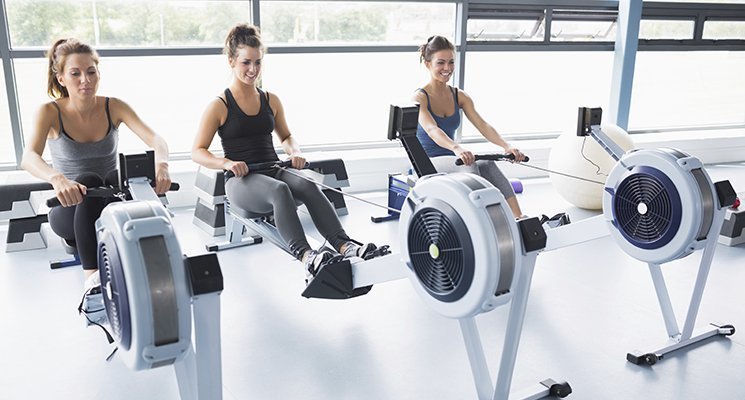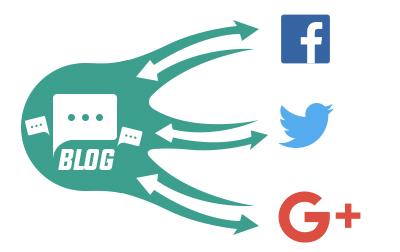For fitness business owners the month of January could be your busiest time of the year… in fact, statistically, it should be.
We’ve all heard it over and over again, New Year’s resolutions, January rush, people wanting to do something about all the weight they’ve gained over the holidays. And sure, that all makes sense logically but does it translate into tangible results for your business?
● Do you get more web leads?
● Is your phone ringing?
● Are you generating more income?
● Does your active member/customer count increase?
The truth is that global search traffic for fitness spikes every January (and has consistently for the past 10 years)
As an Internet marketing professional who is focused on the fitness industry I pay very close attention to these statistics and make sure my clients’ traffic/leads directly correlates with Google’s trends.
Fortunately, when things are done right, we see a pretty close match. In the graphic below we see what I call the “New Year’s Resolution Rush”: a spike in traffic the first week in January.
Everybody knows that Google has the majority of search engine market share– which means if you’re a fitness business, and your website traffic or leads do not directly correlate with these spikes in fitness interest, you’re doing something wrong.
The truth is, as you are reading this article, people are searching online for your kinds of services. If you’re unaware of this or not seeing it in your leads you either have poor SEO, or poor website conversion. Either of which is costing you money.
Here’s 5 things I see fitness professionals doing on their websites that’s hurting their SEO and killing their January rush.
1. Inaccurate Page Titles: Choose wording that matches the content of your page. This may seem straightforward… but consider programs with unique branding e.g. “360 Kickboxing.” You may be tempted to name the page the title of the program but you shouldn’t. Why? Nobody searches the keywords “360 Kickboxing.” Instead you should name the page what the most common search phrase will be e.g. “Kickboxing Classes in [city name]. Then in the content of that page you can talk about 360 Kickboxing all you want. You will notice that the closer your title is to your audience’s search the more clicks you will receive. Use Google Trends to discover how people search – or just use common sense.
2. Talking About Yourself: Your website should have 1 goal in mind: generating interest and leads for your business. Imagine you’re on a first date… sure, your date wants to know about you but if you talk about yourself the whole time, it’s a turn off. The same thing is true for your website. In your website sales text you should clearly cover the following points immediately:
A. What kinds of people do you help?
B. What can people expect? e.g. What kinds of results can they achieve?
C. What do you want them to do?
Interested prospects do want to know about your business’s history and culture but one quick scan of your social media accounts will give them all the information they need about that. My advice is to ask someone unrelated to your business to look over your website and be honest about whether you talk about yourself too much.
3. Using Text Images You know…. the text that really is just an image? Like this:
Search engines can’t read the content of that picture so it does nothing for your SEO. Keep relevant text and links in HTML and instead design the format of your page to handle any fancy fonts/colours you want to include.
4. An Incomplete or Inaccurate Google My Business page: Google Maps, Google Places, they’re all the same things now: branded as “Google My Business.” As Google gives more and more prevalence to their mobile search results, Google my business will play an even bigger role. If you don’t have a Google My Business page, it’s free, and you should make one right now. If you do have one, check it, make sure it’s complete, and then ask your happy customers to leave some 5 star reviews!
5. You’re Not Mobile Friendly: I can’t emphasize the importance of this enough. With more than 60% of traffic coming from mobile devices, how you look on a mobile device is now more important than how you look on a desktop.
Additionally Google now penalizes your SEO if you’re not mobile friendly. It’s been years since mobile responsive technology came out. You no longer have an excuse to not be mobile friendly.
The Internet is full of tools to help determine your mobile compatibility. If you’re unsure about your own website, reach out to us, or find a tool online and do a quick scan.
If the above points sound like a bunch of nerdy tech jargon to you, don’t worry, you’re not alone. The majority of our fitness customers focus on what they do best: helping their clients achieve their fitness goals. Outsourcing your Internet marketing/ website/ SEO is quickly becoming your best time management decision for you.
BUT if the above points make sense you can implement them in your website to make sure you stay relevant across ALL search engines through 2016.
97 Display ONLY works in fitness industries, so your business is our expertise.We offer:
● Websites – beautiful template designs with SEO included
● Incredible customer support – dedicated Account Reps 24 hour request turnaround.
● Fast launch – only a 2 – 3 week build time
● Ongoing SEO & support to keep you relevant
● New designs and feature upgrades for free
It doesn’t matter how good of a trainer you are – if people can’t find you, then you WON’T get the kind of business you’re looking for. Make sure your website is fully optimised and ready for the rush at the start of the year and you’ll have tons of online leads pouring in with minimal effort.
About the Author:
Timothy Sarazen is the director of 97 Display and, along with his team, manages hundreds of websites & Internet marketing campaigns for fitness businesses. 97 Display fitness websites are a collaboration of web traffic data & global A/B testing to help fitness professionals stay relevant and generate new leads for their businesses online. Timothy works with businesses like Roufusport, Net Profit Explosion, NESTA & Hyper Martial Arts to create website solutions for their customer base. 97 Display is a certified Google partner located in Winston- Salem, North Carolina. Learn more tips for improving your website performance at www.97display.com! Authored By: Timothy Sarazen – Director of Operations at 97 Display. 97 Display Creates Websites & Lead Generating Campaigns for Fitness Business. Learn if 97 Display can help your fitness website! Visit www.97display.com.











